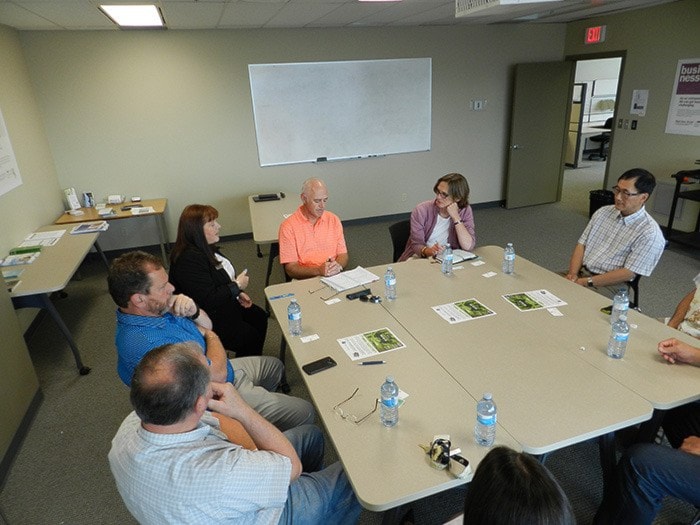The NDP’s Claire Trevena stopped by to talk transit and infrastructure last week and heard the same complaints the governing Liberals have for the past decade.
Maple Ridge is often a neglected community when it comes to spending money on roads and public transit.
“I feel, as a resident of Maple Ridge, we’re kind of the forgotten community,” said Dave Sheppard, one of a half-dozen questioners at the Maple Ridge-Pitt Meadows Chamber of Commerce event.
Sheppard added that in TransLink’s regional transportation strategy, for which voters rejected a half-a-per-cent sales tax increase last year, “Maple Ridge was getting virtually nothing.
“TransLink doesn’t seem to think of us as much of a priority.”
Trevena, MLA for North Island, is NDP transportation critic and was touring the Lower Mainland. She appeared as one of a series of speakers invited by the chamber.
Chamber president Michael Morden said that the organization advocates for equal application of mobility pricing across Metro Vancouver. That consists of a user-pay approach to funding TransLink that involves auto and bicycle users, as well as public transit users.
The chamber also wants to ensure the area gets its share of new federal funding for transit announced by the federal Liberal government, and supports ride sharing, providing it’s done within a regulated framework.
“We have some communities that are not served by transit at all,” Morden told the group, referring to Silver Valley in Maple Ridge.
That area has neither schools nor buses, while there’s some bus service in Albion.
“We can’t get people out of these areas to work.”
Morden said it’s tough for the people in Maple Ridge-Pitt Meadows to watch billions of dollars being allocated for projects in Vancouver, such as the Broadway subway line to UBC.
“We don’t ask for a lot. And yet we can’t get a simple bus into a new community. That’s a bit frustrating for us.”
Travena said, “We will have to find a way of dealing with some kind of road pricing.”
Money from that can be invested into public transit.
Travena told the group that on one occasion, she tried to take the West Coast Express commuter train from Vancouver to Mission in the morning, only to learn that the commuter-rail service only runs westbound in the morning and eastbound in the afternoon.
The commuter rail service uses the Canadian Pacific Railway main line, which is used for freight trains and restricts time for commuter rail.
But one questioner said, in Europe, commuter trains share track time.
The new federal transportation spending is providing five more West Coast Express cars, with one each to be attached to the existing five trains. But there will be no increase in frequency.
Travena was told that there is now standing room only on the train by the time it reaches Port Moody.
Sheppard also wanted to know why the Sea to Sky Highway to Whistler wasn’t tolled when it was rebuilt in 2010.
Liberal MLA Doug Bing told him that provincial policy requires that a free option be available for motorists before a road is tolled.
Travena cautioned the business group about expecting much in infrastructure spending. The next big project is the Massey Bridge in Richmond and that will take $3.5 billion.
“So trying to get money for other infrastructure is going to be very difficult.”
Bing pointed out later that the provincial government has built two new bridges, the Pitt River Bridge and the tolled Golden Ears Bridge.
The Pitt River Bridge also received federal funding of $90 million, while the province contributed $108 million.
Maple Ridge resident and former Green party candidate Peter Tam pointed out that, without transit, more people are in their cars, creating heavier traffic, such as on the Haney Bypass.
“A lot of these roads are not equipped to handle this type of volume.”
It was suggested to increase the time span for green lights on the highway in order to ease traffic flow during rush hours and to offer discounts on toll bridges within a certain period of time.
